In 1925, the inaugural Woman’s World’s Fair was held April 18–25 in the American Exposition Palace. It attracted more than 160,000 visitors and consisted of 280 booths representing 100 occupations in which women were engaged.
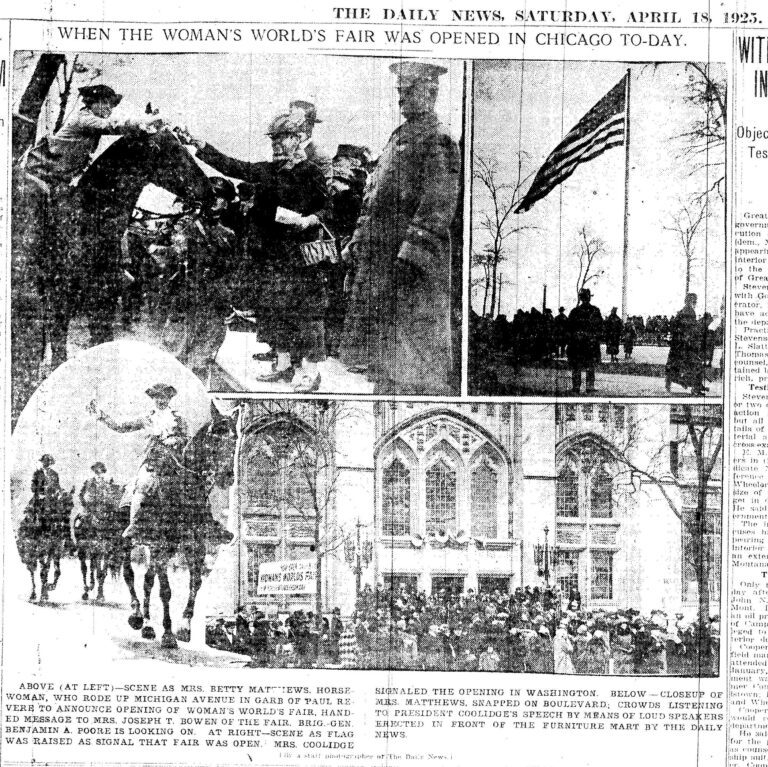
News coverage of the opening showed “Mrs. Betty Matthews, horsewoman, who rode up Michigan Avenue in garb of Paul Revere” on the left, a flag raising that signaled the fair’s opening, and a crowd listening to President Calvin Coolidge’s speech, Chicago Daily News, April 19, 1925, p. 3.
The fair was the idea of Helen Bennett, the manager of the Chicago Collegiate Bureau of Occupations, and Ruth Hanna McCormick, a leading clubwoman and Republican politician.
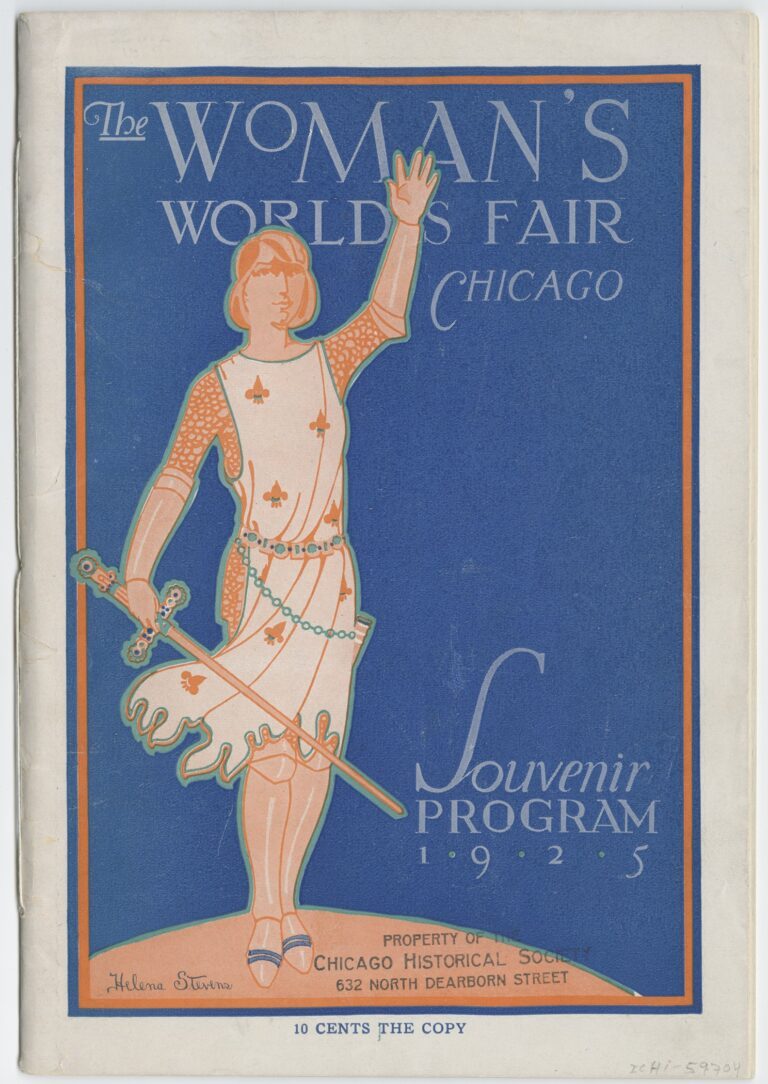
Cover page of The Woman’s World’s Fair souvenir program, 1925. HQ1106 .W6 1925. CHM, ICHi-037941
It was, in part, inspired by the 1893 World’s Columbian Exposition and initiatives such as the Woman’s Building. However, it was also a response to the unequal representation and lack of visibility some women experienced in 1893. Women organizers publicized and ran the fair; its managers and board of directors were all women.
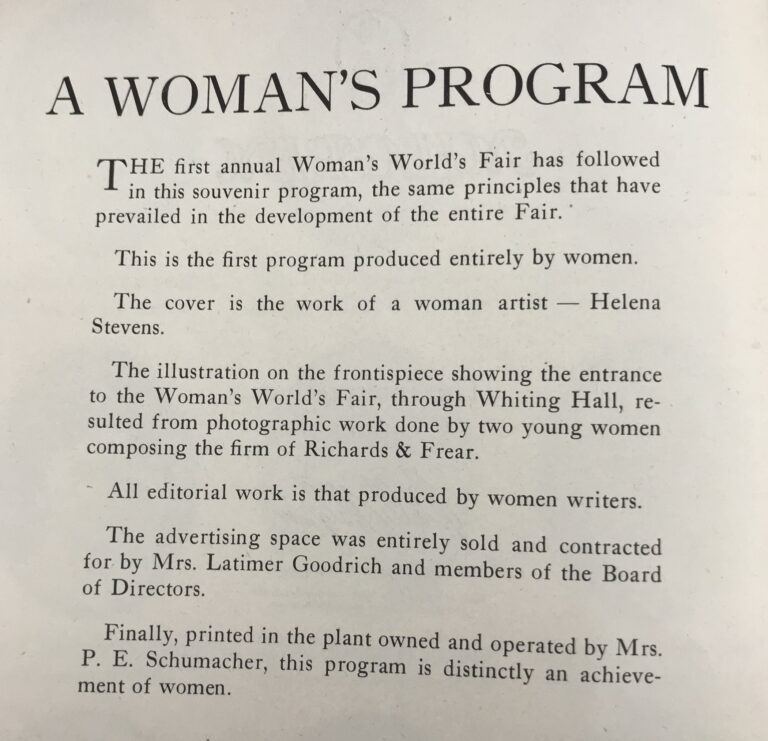
The souvenir program was also entirely produced by women. Photograph by CHM staff
The fair had the double purpose of displaying women’s ideas, work, and products, and raising funds to help support women’s Republican Party organizations. The booths at the fair showed women’s accomplishments in the arts, literature, science, and industry. These exhibits were also intended as a source for young women seeking information on careers.
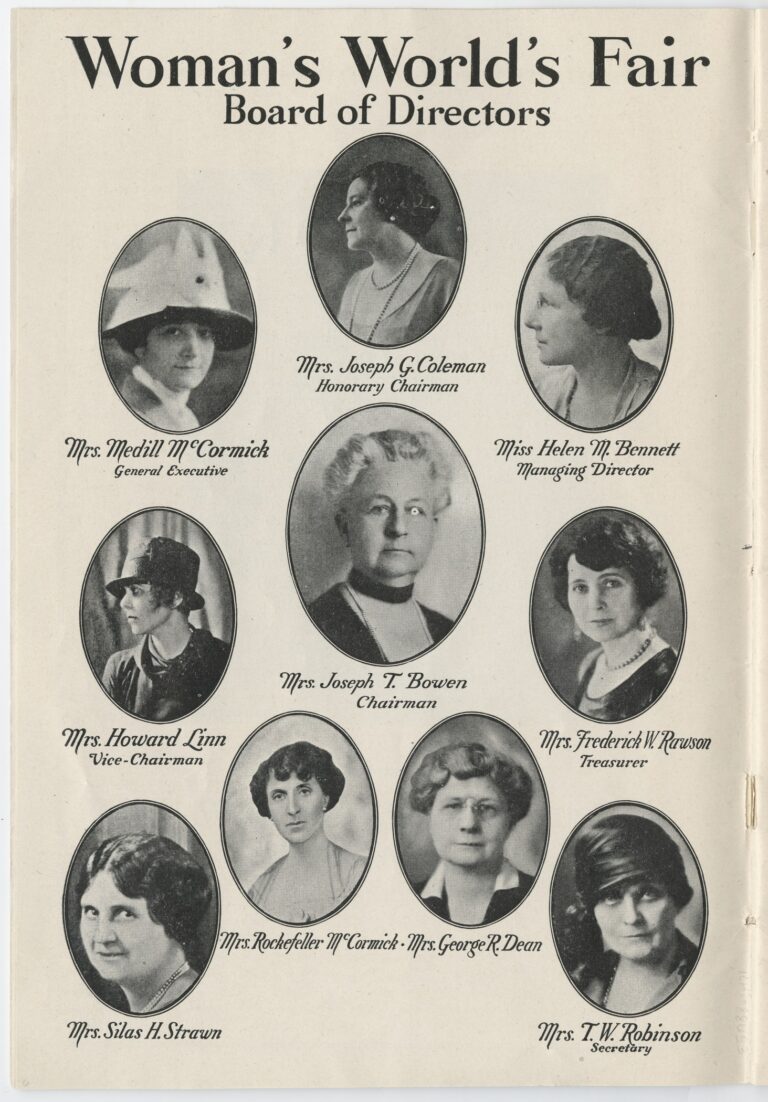
Portraits featuring the Woman’s World’s Fair Board of Directors from page 6 of The Woman’s World’s Fair souvenir program, 1925. HQ1106 .W6 1925. CHM, ICHi-088653
Among the exhibitors at the fair were major corporations, such as Illinois Bell Telephone Company and the major national and regional newspapers. Local manufacturers, banks, stores, and shops, area hospitals, and women inventors, artists, and lawyers set up booths demonstrating women’s contributions in these fields and possibilities for employment. Women’s groups were represented by such organizations as the Women’s Trade Union League, Business and Professional Women’s Club, the Visiting Nurse Association, the YWCA, Hull-House, the Illinois Club for Catholic Women, and the Auxiliary House of the Good Shepherd.
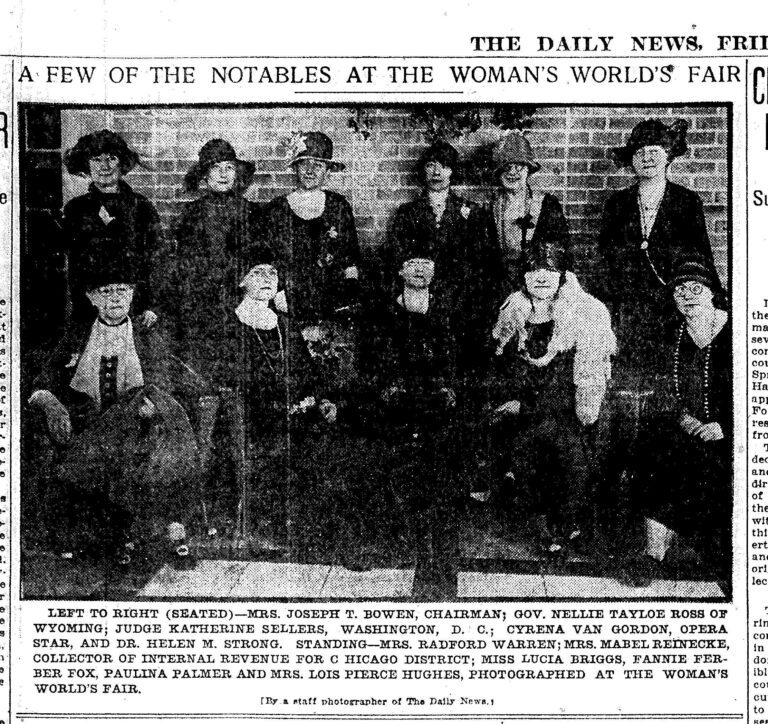
From left, seated: Mrs. Joseph T. Bowen, Gov. Nellie Tayloe Ross, Judge Katherine Sellers, Cyrena Van Gordon, Dr. Helen M. Strong. From left, standing: Mrs. Radford Warren, Mrs. Mabel Reinecke, Miss Lucia Briggs, Fannie Ferber Fox, Paulina Palmer, Mrs. Lois Pierce Hughes, Chicago Daily News, April 24, 1925, p. 5.
The 1925 fair raised $50,000 and was so successful that it was held for three more years.
It should be noted that the Woman’s World’s Fair of 1925 came in the wake of two major events. In the summer of 1919, tensions in the city were high after the racially motivated drowning of Eugene Williams, an African American teenager, in Lake Michigan and ensuing violence and deaths of both Euro-American and African American Chicagoans.
That same year, the US Congress passed the 19th Amendment, giving women the right to vote. The suffragist movement also saw racial tensions, as white organizers would exclude or segregate African American and other women of color from their marches and other efforts. Nevertheless, the resolution’s ratification in 1920 became a watershed moment for women’s rights and radically shifted the national political climate forever.
On the one hand, women asserted their right to be recognized and uplifted through dedicated events of their design. On the other hand, while some strides were made in more racially diverse representation, inequality persisted.
Additional Resources
- View our online exhibition Democracy Limited: Chicago Women & the Vote, which invites visitors to explore women’s activism in Chicago to secure the right to vote—and beyond.
- Listen to Studs Terkel’s interviews with many of the leading advocates of feminism and women’s rights in the mid to late 20th century.
- Peruse our Women’s Studies LibGuide, which lists research collections in the Abakanowicz Research Center relating to women, both within the greater Chicago area and within the broader context of the US.